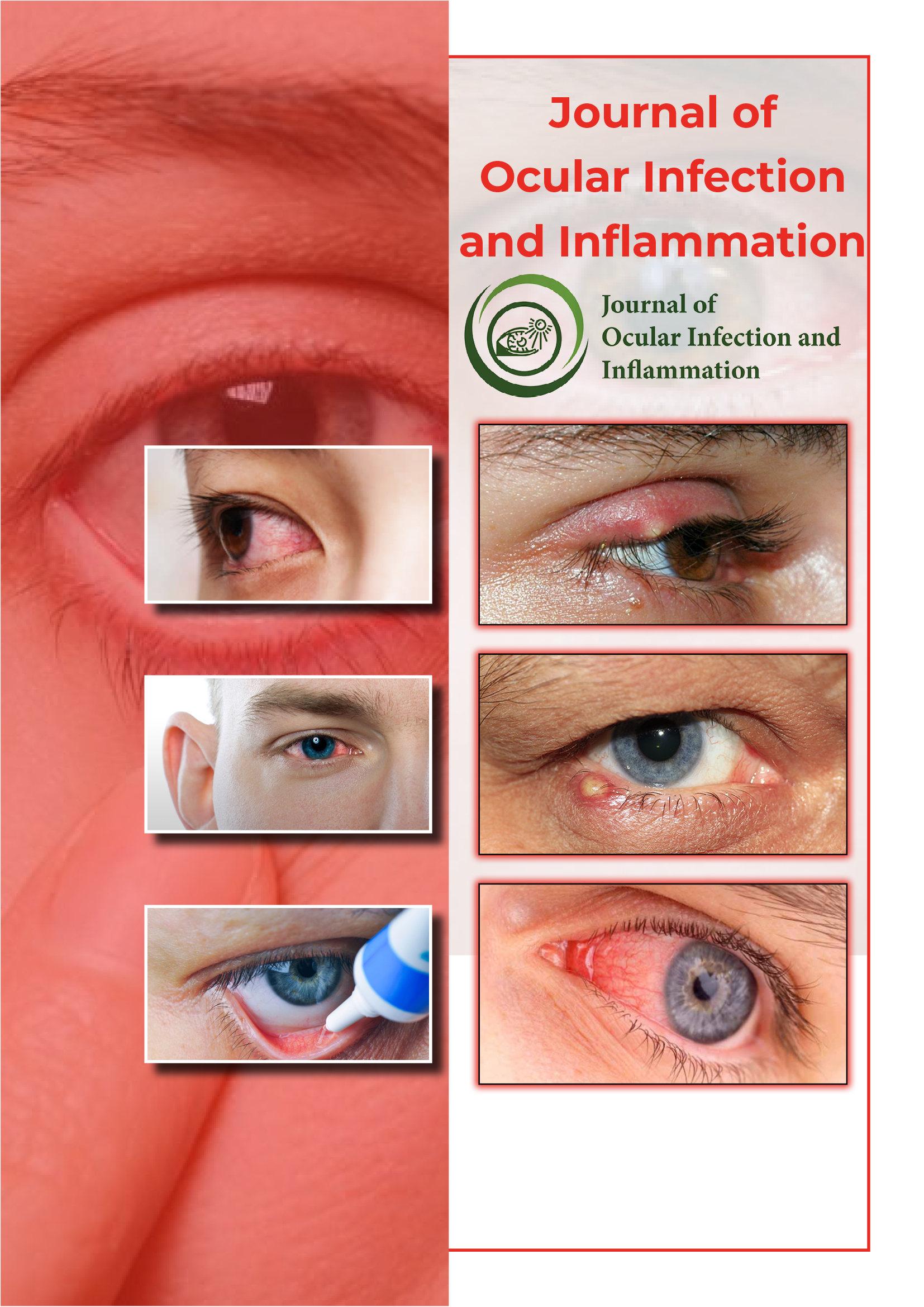Useful Links
Share This Page
Journal Flyer

Open Access Journals
- Agri and Aquaculture
- Biochemistry
- Bioinformatics & Systems Biology
- Business & Management
- Chemistry
- Clinical Sciences
- Engineering
- Food & Nutrition
- General Science
- Genetics & Molecular Biology
- Immunology & Microbiology
- Medical Sciences
- Neuroscience & Psychology
- Nursing & Health Care
- Pharmaceutical Sciences
Opinion Article - (2023) Volume 4, Issue 1
An Overview of Ocular Histoplamosis Syndrome
Calzada Rocio*Received: 02-Jan-2023, Manuscript No. JOII-23-19801; Editor assigned: 04-Jan-2023, Pre QC No. JOII-23-19801 (PQ); Reviewed: 18-Jan-2023, QC No. JOII-23-19801; Revised: 25-Jan-2023, Manuscript No. JOII-23-19801 (R); Published: 01-Feb-2023, DOI: 10.35248/JOII.23.04.109
Description
A frequent, mainly asymptomatic multifocal chorioretinal condition called Ocular Histoplasmosis Syndrome (OHS) is characterised by Peripapillary Atrophy (PPA), chorioretinal scarring, and perhaps developing Choroidal Neovascularization (CNV). A dimorphic fungus called Histoplasma capsulatum infection that occurred accidentally has been linked to the condition. When studying liver and spleen smears from patients who were thought to have the kala-azar sickness, Samuel Darling made the discovery of this fungus in the Panama Canal Zone in 1905. Advanced high-resolution retinal imaging technologies and the introduction of Anti-Vascular Endothelial Growth Factor (anti-VEGF) medication have improved the accuracy of chorioretinal disease diagnosis and CNV treatment.
Since the early 1940s, numerous researchers have discussed the constitutional and ocular features of the illness, including Reid, Woods and Wahlen, and Schlaegel. In his renowned macular atlas from the 1980s, Gass gathered all previously reported clinical findings in OHS and put forth a probable aetiology. His illustrated theory on CNV genesis and subsequent development of a disciform scar was maybe his most significant contribution. He also explained how OHS differs from other mimicking lesions. Peripheral chorioretinal scarring and PPA are unintentional findings in young children screened during routine eye exams because the original infection likely occurs several years before the onset of symptoms. Males and females are equally impacted. According to various publications, white individuals are more likely to experience OHS signs and symptoms than black or Hispanic patients. However, there was no discernible difference in the proportion of histoplasmin skin test reactions between white and black patients, indicating that sensitization occurs similarly in both groups. The most prevalent mycosis in the world is histoplasmosis. A triangle that has its apexes in Eastern Nebraska, Central Ohio, and Southwestern Mississippi, sometimes known as the Mississippi and Ohio river valleys, serves as the definition of the "histo belt" in the United States. The majority of Americans in Tennessee are infected with histoplasmosis. OHS has only been documented in a small number of nations outside of the United States, including Mexico, India, the United Kingdom, and the Netherlands. The absence of OHS in many nations may raise concerns about the aetiology or point to a lack of documentation. Depending on the surrounding environment, H. capsulatum can take on two different morphologies: the mycelial form found in the soil and the yeast or spherule form found inside the host. Inhalation of infectious spores or conidia is the main method of infection. The environment's wetness is strongly connected with the Histoplasma skin test's sensitivity and correlates with locations where histoplasmosis infections have been documented in large numbers, such as excavations, old structures, bird habitats, or bat-inhabited caves.
Mild flu-like symptoms may appear after the fungus has been exposed for the first time. Most patients will experience asymptomatic calcified lung nodules and positive histoplasmin skin responses after this first infection. Patients are particularly vulnerable to severe visual impairment after developing CNV or a subsequent macular scar. Feman, et al reported in 1982 that 2.8% of Tennessee applicants for services for the blind had visual impairments. There aren't many descriptions of OHS's acute manifestations; this is probably because the underlying infection didn't cause any visible symptoms. The most accurate description is the emergence of fresh, whitecreamy patches a few days or weeks after the original infection but not previously seen on fundus inspection. The presence of minor respiratory symptoms may be an accidental finding in asymptomatic patients.
Citation: Rocio C (2023) An Overview of Ocular Histoplamosis Syndrome. J Ocul Infec Inflamm. 04:109.
Copyright: © 2023 Rocio C. This is an open-access article distributed under the terms of the Creative Commons Attribution License, which permits unrestricted use, distribution, and reproduction in any medium, provided the original author and source are credited.

